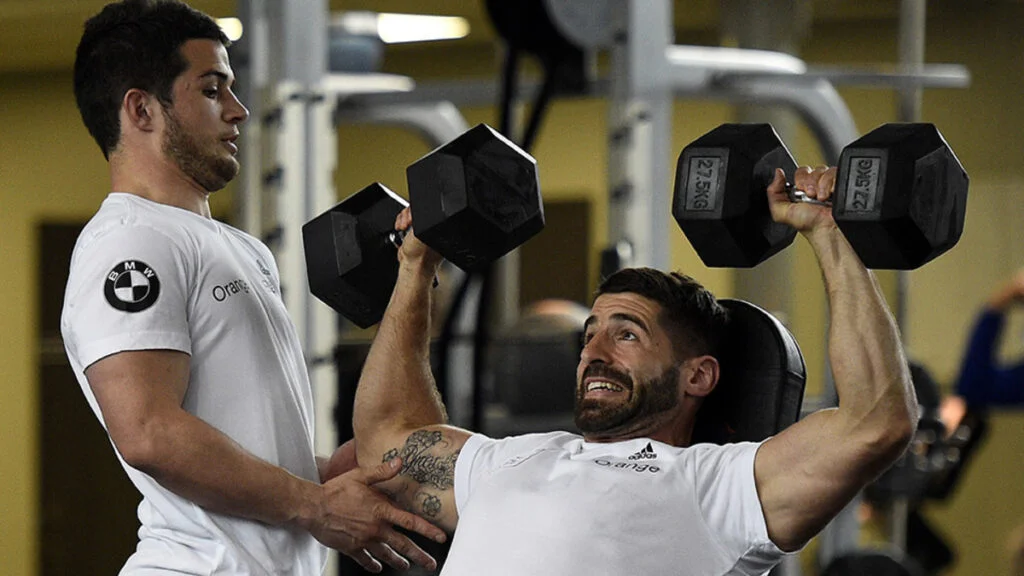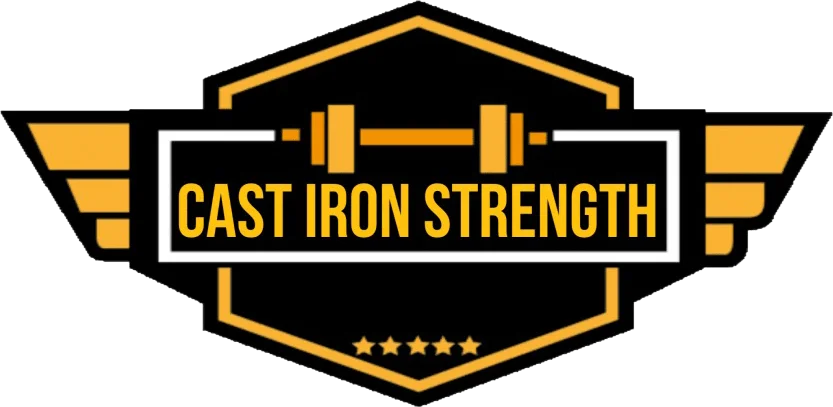There are few sports outside of lifting where an athlete faces an undeniable and objective measure of their own success or failures. The higher, faster or further sports in athletics or other such sports where you have a time, distance or height to measure your performance against give you the same objective feedback. However there is something more tangible about the load you are trying to lift, pushing you to the floor in squat, falling to your chest on bench, falling towards your head in snatch or any other moment in strength sports when a large steel object decides it isn’t going to let you overcome gravity. Combat sports are probably the sport where failure has the most real and relevant outcomes but that isn’t a discussion for this blog.
Are you afraid to fail?
There is a phenomenon in training and lifting a lot of us refer to as momentum. When you are in a spot where you are making heavy sets, setting PBs, assistance is moving well and basically training is on easy mode and everything is going well. It takes time to cultivate this sort of zen state of lifting and what stops us getting there is a mixture of accumulation of fatigue and early exposure to failure either in the form of intended failure (lifting to the point where you can’t lift anymore) or unintended failure overshooting an attempt at a heavy lift and not making it.
Coaches are probably more guilty of creating an environment where we shy away from failure in lifting. Where we like to start light and keep a few reps in the tank. There is a good argument for this in terms of research when it comes to developing strength. I can speak for myself that I have a bias towards trying to create an environment where the people I coach succeed as much as possible as we will go on to discuss in this article this is a double edged sword and something we should maybe be more willing to explore.
What is the real cost of failure?
Before we attempt a new personal best lift, if we were to sit and contemplate the repercussions of failing it, what actually are they?
- We could catastrophize it and make the weight into a boogeyman but that is almost 100% down to our own perspective and how we choose to look at it. IF we start to build narratives around how we can’t lift that weight or how it’s some massive achievement we would be lucky to achieve then we make it into some huge mental monster. When in reality it’s just a weight on a bar same as our first warm up that we treat with utter contempt.
- We could get injured but we are as likely if not more likely to injure ourselves doing any number of things in the gym. For instance you are probably more likely to hurt yourself in a gym by dropping a plate on your foot than you are from hurting yourself on a maximum attempt. Playing football with your mates or kids carries orders of magnitude more risk for injury than lifting a new one rep max in the gym.
- We will probably be more stiff or sore for the next few days or even a week.
- The opportunity cost of doing a different workout or being fresher and ready for training for the rest of the training week.
That’s about it really. The risk of failure in training is far more hyped up than the reality of failure in training. I still personally would prefer to see a program built around challenging a lifter in a way where they succeed more than they fail, however failing and having a healthy attitude to failure is probably essential if you are going to become the best lifter or athlete you can be.

To Fail or not to Fail that is the question.
As with any hypothesis we can find data to support any conclusion we have if we are willing to dig into google scholar far enough. To try and eliminate this I will always look for systematic review and meta analysis. I don’t really pay much attention to what single studies or case studies tell us as evidence they can be interesting to look at but they don’t often stand up to reality.
In a recent systematic review and meta analysis Grgic et al (2021) – https://www.sciencedirect.com/science/article/pii/S2095254621000077 entitled – Effects of resistance training performed to repetition failure or non-failure on muscular strength and hypertrophy. They looked at all available studies and out of a pool of 1972 studies they included 15 which were of sufficient quality to be included in the analysis.
The following are the relevant outcomes –
- Meta-analysis indicated no significant difference between the training conditions for muscular strength (ES = –0.09; 95% confidence interval (95%CI): –0.22 to 0.05) and for hypertrophy (ES = 0.22; 95%CI: –0.11 to 0.55).
- Subgroup analyses that stratified the studies according to body region, exercise selection, or study design showed no significant differences between training conditions.
- In studies that did not equate training volume between the groups, the analysis showed significant favoring of non-failure training on strength gains (ES = –0.32; 95%CI: –0.57 to –0.07).
- In the subgroup analysis for resistance-trained individuals, the analysis showed a significant effect of training to failure for muscle hypertrophy (ES = 0.15; 95%CI: 0.03–0.26).
There is no real evidential weight towards training to failure or not training to failure being better for strength gain. My own anecdotal observation is that staying away from failure most of the time and brining it in strategically is the best mix for getting strength gains. Training to failure can help a person realise what they are actually capable of under a bar and can be a great tool to help people start to realise what hard training actually is and what they might be capable of.
When training for hypertrophy I think some kind of training to failure is beneficial it shouldn’t be the only way you train but it is a very useful tool when trying to activate and put the most amount of muscle tissue under stress which is effectively the whole point of training for size.
The most productive way to look at training to failure deliberately in your training is that it is a useful tool and something that can be used to help enhance your training outcomes. However it comes at a cost and that cost is significantly increased levels of local (muscular) and global (systemic) fatigue which can severely limit your ability to train meaningfully and thus hamper your training outcomes.
Don’t be a fucking zealot – above all the most important take away is to not dogmatically put your flag on either hill of training to failure being the best way to train or keeping reps in the tank is the only way to get better because this is the only sure fire way to get it wrong.
Knowing what you are capable of
I think there is utility to knowing and not knowing what you are capable of. If you are too aware of your own ability all of the time I think it can be a millstone around a lifters neck see the first real cost of failure. It doesn’t have to be a millstone it can be a data point but for some lifters and some psyche’s it can really ground them and actually be the biggest thing that stops them from progressing. When someone starts a self fulfilling prophecy loop. I can only lift x so if I attempt y I am only going to fail so what is the point in even trying the problem isn’t anything training will ever solve. It’s a mental skill a lifter or athlete needs to develop and this is something they will need to work on in their own time. A coach or mentor can help to show them ways to try and challenge or change it but only the athlete themselves can make the change.
Knowing where you are in terms of strength development is one of if not the most important parts of setting useful and successful training sessions. It can be inferred easily using rep max calculators or using RPEs to infer an estimated training maximum. You can use 1 rep max tests, mock training meets or as many rep as possible sets (AMRAPs) to either directly test your strength or infer it from the previously mentioned methods.
However if you are to know what is an appropriate load for your training than you need to know what you are capable of either via proxy or directly. Either way you need to either go towards failure or be aware of where failure is. To be aware of where failure is involves experiencing failure.
There is no real way of getting around it in strength sports if you want to be successful failure is something you are going to experience when you don’t want to and it’s also something that is necessary as a tool or learning experience so you can better manage your proximity to failure and utalise it to your advantage.
- If it’s using tools designed to allow you to manage your proximity to failure in sessions to reach more successful outcomes for example using RPEs as a benchmark for estimated maximums or to achieve the desired level of stimulation and fatigue for the week.
- If it’s using AMRAPs to help induce rapid and acute developments in strength or to help a lifter realise what pushing to failure is actually like.
- If it’s using pushing to failure or beyond doing forced reps to increase muscle activation to help and enhance your hypertrophy outcomes or to try and make your training more time efficient.
- We can term this kind of failure as failing when you want to fail which brings us to.

Failing when you don’t want to fail
Failure is a tool to be used but it is also that is going to slap you about in training. You will have goals you want to achieve. You are going to want to win competitions, set personal bests and achieve landmark lifts. You will fail at some point and you are probably going to get injured at some point. It isn’t really a question of if, it’s a question of when.
You will never achieve what you can as a lifter or an athlete if you aren’t robust and being robust means accepting and adapting to failure. To not be scared of failure is to be open to its possibility and to use it as the most powerful form of feedback available to you.
Being disappointed and down trodden is part of the process when it comes to trying to achieve anything. But you should also be able to accept it and move on with what you are trying to achieve. I don’t think we should invalidate how we feel when we fail to achieve our goals it is understandable or even desirable to feel bad when things don’t go your way because if you are indifferent to those events than it probably shows you don’t care and if you don’t care why are you showing up to training?
However we shouldn’t be scared of it or allow the fear of failure to affect our decisions. We need to accept it as what it is. Part of being successful some could even call it the price of being successful, experiencing and being aware of your shortcomings is essential information for anyone who wants to excel at anything in life.
Failure is here, failure is real and it’s probably more important to your ultimate success than being successful ever will be. That is the Utility of failure.

